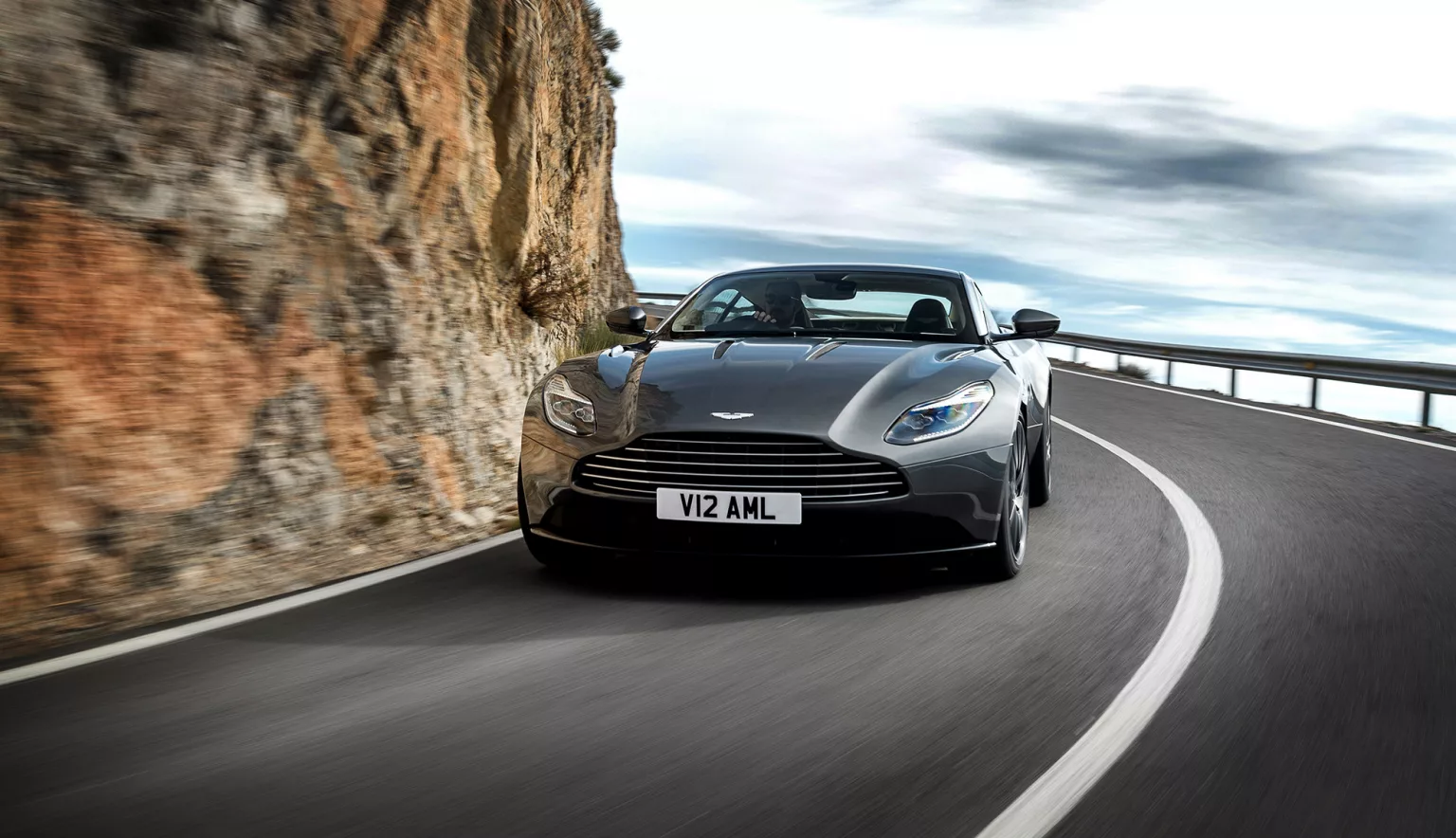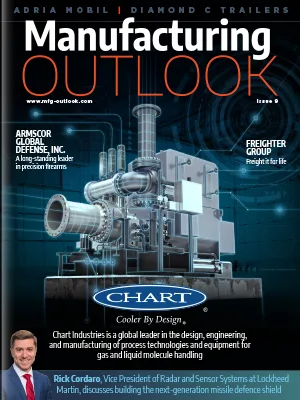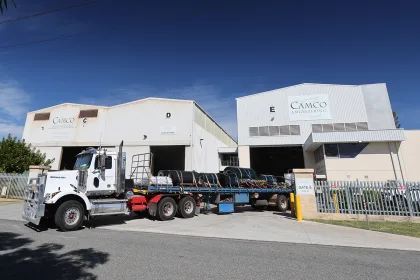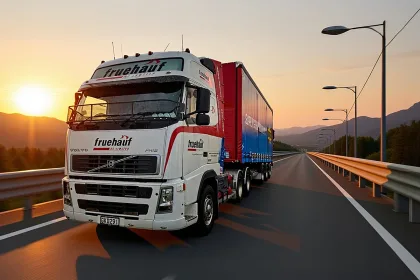Aston Martin Middle East CEO, Dr Andy Palmer explains how the brand’s global appeal for creating some of the most attractive cars in the world fits perfectly within a Middle Eastern setting where the exotic is given license to flourish.
FOR THE LOVE OF BEAUTIFUL
In 2013, Aston Martin reached a significant milestone in the form of its 100th birthday; a feat that not only facilitated a period of reflection from the global car community on the heritage, prestige and beauty that has been before, but that was also triggered by the excitement of what is still to come from the luxury British manufacturer.
This excitement has derived primarily from the unveiling of the Company’s ‘Second Century’ plan, a strategy that caught the eye of car enthusiasts the world over, and especially in the Middle East where luxury is more of a way of life than a seldom indulgence.
For Aston Martin, the Middle East represents a potential match made in heaven; a notion which has not gone unnoticed to the brand, or indeed its Chief Executive Officer (CEO), Dr Andy Palmer, as the Company looks to differentiate its elite products from the rest of the market’s exotics.
“The Middle East is an important region to us, because if we measure the world by high-net worth individuals then the region becomes one of the biggest to go after,” he opens. “But more important to consider is the fact that the Middle East is essentially a big bar of specials and exotics. To some extent it leads the world in that particular area, thanks in part to a large number of collections.
“However, you don’t break into a market like that from a standing start. It takes time and – while Aston has been around for a long time and does have collectors in the Middle East – there have been periods where we weren’t building our business sufficiently fast in the region. And that’s why we’ve restarted our drive into the Middle East of late, in particular with the specials that are coming through.”
This reignition into the Middle Eastern consciousness began in essence with the One-77, later to be compounded – emphatically – via the Zagato, the Vantage GT12 and the Vantage GT8; numerous batches of each having been subsequently shipped to customers in the Middle East from Aston Martin’s manufacturing facility in Gaydon, UK.
“If I was to put it into steps, our ‘baby-step’ would be the fact that we’ve been in the Middle East for an awful long time, but I would say that there’s been a marked improvement recently in our position in the Middle East with the specials; and you will now start to see a further continuum of that with the new DB11 moving forward,” Palmer says. “The Middle East is particularly sensitive to new cars, so as we renew our portfolio, I’d expect the next step to be even more improvement in terms of our presence in the region.”
The “final big step” for the brand in the Middle East will revolve around the availability of Aston Martin’s SUV, the DBX in 2019; SUVs evidently being an important part of the vehicular infrastructure in the region, and with Palmer positive that the new car will be a natural alternative to the Nissan Patrol or the Toyota Landcruiser in the months and years to come.
HARNESSING THE GEOGRAPHICAL FOOTPRINT
The steps being taken in the Middle East are a natural complement to the general product improvements and unveilings comprised within the Second Century plan, the new-look portfolio predicted to touch upon a sweet spot already existing for customers across that geographical footprint.
For cars like the Zagato and the GT12, major improvements have either already taken place or are underway, while penetration sales for the Aston Martin AM-RB 001 are notably high in regards to market share in the region.
Perhaps most excitingly though, the aforementioned DB11 represents the next phase of Aston’s product evolution and, alongside the new Vantage and the new Vanquish, Palmer is confident that the new compliment will serve as a transformational kick-starter for the Company’s business model in the Middle East as it tries to convey the same messages already lauded in the Group’s native UK.
“As an English guy joining Aston I would always use the analogy that Aston Martin is a bit like cricket,” the CEO explains. “As I grew up nobody ever taught me the rules of cricket, I just used to play with a bat and ball in the street and somehow by osmosis you learnt the rules.
“Now if you go to Dubai for example and say, ‘hey, do you know what cricket is?’ they’ll say yes. But if you ask if they understand cricket, the answer will probably be no. And Aston Martin is just like that: it is very well understood in the UK but not so well understood as you go further afield.
“And that’s the pressure that comes with Aston Martin entering new markets. It’s one thing to bring new cars to market – and we’re doing that – but another thing altogether to explain why they are innately different from a Ferrari or a Rolls-Royce.”
Senior management has consequently taken a step back since the advent of its Second Century plan to better grasp this challenge and to try and understand what makes Aston Martin cars – and indeed the brand itself- so unique.
Palmer continues: “We’re clearly not Ferrari, chasing the last 0.01 of a second. We’re clearly not Rolls-Royce looking to make very, very comfortable and luxurious big cars. And we’re equally not the average of the two. Of course we make very fast and very luxurious cars but it’s not an average.
“I’d describe it as more of a triangle, and our raison d’etre is very clearly for the love of beautiful. Everything we do is driven by the aspiration to make the most beautiful cars in the world and we need to teach the world that message.
“We need to demonstrate it not just by bringing beautiful cars to market, but also by explaining why our cars are beautiful: beautiful proportion; beautiful design; beautifully authentic material; beautifully British; beautifully handmade; beautiful sound; and beautiful to touch.
“Everything about them has to be beautiful and we need to educate our potential clients that that’s why they should be proud of having an Aston Martin in their garage, and that’s what makes us different to a Ferrari.”
DB11 FOCUS
“A new chapter in Aston Martin’s history began at the 86th International Geneva Motor with the unveiling of the DB11. The first product launched under the Company’s ‘Second Century’ plan, DB11 is the bold new figurehead of the illustrious ‘DB’ bloodline and an authentic, dynamic sporting GT in the finest Aston Martin tradition,” Aston Martin announced in a press release in Geneva back in March, 2016. “The DB11 showcases a fresh and distinctive design language, pioneering aerodynamics and is powered by a potent new in-house designed 5.2-litre twin-turbocharged V12 engine.
“Built upon a new lighter, stronger, and more space efficient bonded aluminium structure, DB11 is the most powerful, most efficient and most dynamically gifted DB model in Aston Martin’s history. As such, it is the most significant new Aston Martin since the introduction of the DB9 in 2003.”
Palmer added: “We aspire to make the most beautiful cars in the world. DB11 is the absolute embodiment of what an Aston Martin should be and we have worked tirelessly to ensure that DB11 combines both exceptional design with the latest technology throughout.
“A brand new bonded aluminium platform, clever aerodynamics, a new characterful twin-turbo V12 and class-leading infotainment systems are just a few aspects which make this the sports car that will proudly spearhead Aston Martin’s Second Century plan.”
THE ASTON MARTIN STORY
“The Aston Martin story reaches a significant milestone in 2013 – a milestone to share with our team, our partners, our customers and Aston Martin enthusiasts the world over. One to remind us of our unique heritage and fiercely independent tradition, and one to inspire exciting chapters yet to unfold.”
Less than four years ago, this was Aston Martin’s 100-year anniversary announcement as it also unveiled its Second Century plan as a global car manufacturer.
The Company continued, from its Gaydon (see below) headquarters: “There have been racing triumphs, road cars built with passion and skilled craftsmanship, and there have also been times when Aston Martin has stared into the abyss… However, the marquee’s centenary year is marked by our strongest and most comprehensive line-up ever and a significant investment fund to ensure the range continues to grow and improve, exceeding the expectations of even the most demanding customers. Despite challenging economic times Aston Martin strides forwards and the old boom-and-bust instability is, thankfully, a thing for the history books.”
And so it proved to be. The “independent, competitive, ambitious” creator of the most beautifully styled and luxurious sports cars on the market looked towards the next 100 years of an evolution built upon spirit, determination and passion.
Specifications:
- Length:4,739 mm (including number plate plinth)
- Width: 1,940 mm (excluding door mirrors); 2,060 mm (including door mirrors)
- Height: 1,279 mm
- Wheelbase: 2,805 mm
- Fuel tank capacity: 78 litres (17.2 Imp. Gal. /20.5 US Gal)
- Weight: 1,770 kg dry weight
- Weight Distribution: 51%/49% (front/rear)
- Maximum power: 447kW (600bhp / 608PS) at 6,500 rpm
- Maximum torque: 700Nm (516 lb ft) at 1,500-5,000 rpm
- Acceleration: 0-62mph (0-100 km/h) in 3.9 seconds
- Maximum speed: 200 mph (322 km/h)
RELEVANT TRENDS
The proud elite boasting Aston Martins in their garages are stereotypically categorised by Palmer as members of the ‘high-net worth population’; those fortunate enough to have US$1 million, bankable and disposable income.
More from Manufacturing Outlook
At present, there are around 16 million individuals that fit under this umbrella, and the aforementioned mission to differentiate within and to educate this sector of society about the sprit and essence of Aston Martin is of paramount importance within the Second Century plan.
As Palmer explains though, the automotive domain is not a static market, and the need to remain adaptable across ever-changing trends and requirements – all-the-while maintaining this core Aston Martin ethos – is a tricky one to negotiate.
“Historically I guess we’ve sold mainly to male baby-boomers – the 50-60 year-old range – but the generation change is coming and is marked by the move from baby-boomers to Generation X and ultimately, Generation Y,” he notes. “And obviously in doing that there’s a different set of things you have to consider each time; the most obvious one being connectivity, which draws you into interesting industry trends like car sharing, autonomous driving and electric vehicles (EV).
“As a luxury brand I’m not suggesting we’re going to be joining those arms races and looking to get an autonomous car as quickly as possible to market, but some of those trends are relevant to us; EV in particular!”
Critically, ‘the love of beautiful’ isn’t the preclusion of the future and of environmentally sensitive advances such as the “EV power train”, but is a concept open to embracing such evolutions as long as that initial concept isn’t compromised.
Palmer adds: “A car can be beautifully silent as long as it’s also beautifully powerful. I think EV is an obvious place we should be and we will be in 2018 with the Rapide EV. But with other trends like autonomous driving, we probably won’t be rushing into that particular market, because our customers – all of them – choose an Aston Martin because they love driving!
“That being said, there are technologies within the suite of autonomy – for example, automatic parking or valet parking – which could be extremely interesting to our customer type. So I would say we pick and choose the technologies that we bring to market in the context of an environment which is all about car shares, electric or zero emissions, connected cars, and autonomy.”
BEYOND LEAN
Behind every new technological progression, automotive innovation and design breakthrough is a behind-the-scenes network built wholly and uncompromisingly around the strive for lean optimisation. Supported by Daimler’s five percent shareholding and subsequent access to key technologies – including electrical architecture and the V8 engine – the need to invest in new cars and new specs is one naturally accommodated by Aston Martin’s long-established dedication to human feel and bespoke manufacturing.
“You’re seeing enormous investment into new cars at the moment, which also provokes new technologies; and our particular skill, which I think is industry-leading, is in the area of bonded aluminium. We don’t weld our cars together, we glue them together,” Palmer affirms. “Add the use of carbon fibre into this all-encompassing, market-leading industrial design, and that’s our particular niche of advanced technology.
“I would then go one step further and say that the way we manufacture is also industry-leading through the actual use of the technology. I would argue that once you come out of the body shop with those bonded tubs, and you move through the paint shop; while it is very labour intensive because we hand-build the cars from there on in, the fact that you’re able to make every car bespoke to a customer makes us not just lean – but beyond lean!”
Every car on the flow line is essentially unique, rather than a batch or a flow; a differentiator unique to Aston Martin, and one that is set to be replicated in its impending St Athan factory in Wales once up and running.
“Across both St Athan and Gaydon, we will continue to make big investments into this ‘beyond lean’ technology, and the new factory in particular will take care of the production of our first SUV, the DBX, and ultimately also the Lagonda brand which will be brought to market within the Second Century plan,” Palmer says. “This doesn’t just represent big facility upgrades but actually a complete new facility over in Wales, and it will be embracing these ‘beyond lean’ technologies and continuing our dedication – even with the SUV – to the bonding of aluminium.”
Similarly to its cars, Aston Martin’s lean structure has to be flexible and applied on an international scale, especially when taking into account the Company’s supply chain network and what it calls ‘flow management’. Again addressed as part of the Second Century plan, the Group has consciously migrated from a wholesale business model where batches of cars are ushered towards dealerships, to a retail model where shipping is dictated solely by customer sales.
“Supply chain has to be a handshake between the centre and the region,” Palmer states, “and this retail model has ensured good car flow management over the past two years.
“We’ve completely eliminated the principle of keeping Company stock in the regions. Everything is a kanban pull where the customer orders the car, the car goes to the region, and you keep the dealership lean. It means you don’t have a lot of ageing stock, and also means that cars are more easily customised and bespoke to each customer’s needs.”
GLOBALISATION OF SKILLS
At both Gaydon and St Athan, the concerted focus on lean optimisation is complemented by an equally critical commitment to the influence of human input; affirming the feel and essence that is achieved across all Aston vehicles, although requiring a set of skills seldom seen in the modern day sector.
“Our factory is very much revolved around crafts and technical skills, and a skill-set that barely exists these days which is the ability to hand-make and handcraft cars,” Palmer enthuses. “We have to hire our own apprentices and train them in the means of crafting with leather, or in sewing hides.
“More than any other car company, we rely upon human skills, because we manufacture something that can’t be replicated by artificial intelligence.”
Further afield, the same emphasis on Aston Martin-specific training and an Aston Martin-specific structure is implemented across it sales, marketing and distribution departments, with the Middle East a prime example of the brand’s recruitment ideology.
Palmer continues: “As you go out into the regions, you’ve got to recruit people that are both empathetic and knowledgeable about the brand and why the brand is ‘for the love of beautiful’, and they become the ambassadors that basically take that message forward. They’re the disciples that deliver that important message.”
Members of staff from all corners of the global Aston Martin community are brought to Gaydon to help instil these Company philosophies, before taking their enhanced brand understanding back to their respective regions as part of the vital marketing, sales or project planning divisions.
Palmer notes regarding the latter role: “It’s all part of the globalisation of skills, and these project planners are the people who help us determine what our future projects look like. For the Middle East, for example, it’s the regional project planner who helps to ensure that nothing is overlooked when evaluating what is important to the Middle Eastern customer.”
SECOND CENTURY PLAN
Aston Martin’s presence in the Middle East is exciting by virtue of its current transformational status. Where the brand has historically and traditionally flourished – and has now become a staple in luxury automotive excellence – that same evolution is now unfolding in front of the Company’s eyes in a region that by all accounts seems a natural fit for such products.
The high-net worth population is in abundance and the focus is inevitably now honed in on developing outlets and dealerships in strategic locations conducive to attracting said audience.
“We need to put them in places where you have people who are able to buy and want to buy our products,” Palmer elaborates. “The net result is that we become present in most of the Middle East – the region we call AMMENA which also extends into Israel, East Europe and Northern Africa – and generally speaking in interesting places where you get foot traffic.
“We try to make sure that all dealerships conform to the brand identity and the ethos in which we sell, and an example of that would be the dealership we’re currently building in Abu Dhabi which is located next to one of the most famous hotels in the city. That’s exactly the type of place we need to be!”
And in terms of getting to where it needs to be, Aston Martin’s overall ambitions take a much more globalised and progressive stance. The brand’s Second Century plan is already in full swing, but as the rewards turn from conjecture to reality, the automotive world will have a more wholly global – and undeniably more formidable – Aston Martin in its midst.
“Over the next five years, we’ll have pretty much completed the Second Century plan, and what you’ll see from this is a brand as healthy as it’s ever been, yet also better understood across all regions,” Palmer concludes. “More importantly, you’ll see a fresh vehicle portfolio of seven cars develop, and this will cover the full range. GT sports cars – yes! Mid-engine sports cars – yes! SUVs – yes! Luxury sedans – yes!
“So you’ll have that portfolio and the saliency of the brand will be better understood, but what I also hope to be able to report back in the coming years is that we’ll be operating in the context of a luxury Company; a luxury Company like Chanel that just so happens to be selling motor cars rather than handbags.
“Aston Martin will be understood, first and foremost, as a luxury Company, satisfying a certain lifestyle for a certain clientele, and making the most beautiful cars in the world.”

































